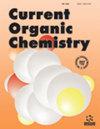碳酸二甲酯的绿色途径:一种绿色的多功能甲基化反应物
IF 2.1
3区 化学
Q3 CHEMISTRY, ORGANIC
引用次数: 0
摘要
:这篇微型综述报告了目前用于生产碳酸二甲酯(DMC)的工艺路线,碳酸二甲酯是一种广泛用于有机合成的绿色多功能甲基化反应物。此外,还讨论了 DMC 在甲基化过程中的应用。DMC 的主要生产路线包括光气与甲醇的反应、甲醇与 CO 的氧化羰基化反应以及脲甲醇分解反应。然而,这些方法都不能被认为是完全绿色的,而且在绿色化学原理方面也存在缺点。本综述还从绿色化学原理的角度探讨了目前 DMC 的商业化路线,即二氧化碳与环氧乙烷发生初始反应生成碳酸乙烯酯,碳酸乙烯酯再与过量的甲醇发生反应。此外,本综述还重点介绍了从甲醇和二氧化碳反应中直接生产 DMC 的方法,讨论了催化剂和改变平衡的策略。重点讨论了异质催化剂,特别是基于 CeO2 的催化剂。最后还讨论了利用壳聚糖吸附剂和可再生甲醇捕获二氧化碳生产 DMC 的问题。本文章由计算机程序翻译,如有差异,请以英文原文为准。
Green Routes to Dimethyl Carbonate: A Green and Versatile Methylating Reactant
: This mini-review reports the current routes used for the production of dimethyl carbonate (DMC), a green and versatile methylating reactant widely used in organic synthesis. The use of DMC in methylation processes is also discussed. The main routes of DMC production, encompassing the reaction between phosgene and methanol and the oxidative carbonylation of methanol with CO and urea methanolysis, are summarised. However, none of them can be considered entirely green, and the drawbacks in terms of green chemistry principles are addressed. The present commercial route to DMC, which involves the initial reaction of CO2 with ethylene oxide to produce ethylene carbonate that further reacts with excess methanol, is also explored regarding the green chemistry principles. Moreover, this review focuses on the direct DMC production from the reaction of methanol and CO2, discussing catalysts and strategies to shift equilibrium. An emphasis is given to heterogeneous catalysts, especially those based on CeO2. A final remark on the production of DMC through the capture of CO2 using chitosan-derived adsorbents and renewable methanol is addressed.
求助全文
通过发布文献求助,成功后即可免费获取论文全文。
去求助
来源期刊

Current Organic Chemistry
化学-有机化学
CiteScore
3.70
自引率
7.70%
发文量
76
审稿时长
1 months
期刊介绍:
Current Organic Chemistry aims to provide in-depth/mini reviews on the current progress in various fields related to organic chemistry including bioorganic chemistry, organo-metallic chemistry, asymmetric synthesis, heterocyclic chemistry, natural product chemistry, catalytic and green chemistry, suitable aspects of medicinal chemistry and polymer chemistry, as well as analytical methods in organic chemistry. The frontier reviews provide the current state of knowledge in these fields and are written by chosen experts who are internationally known for their eminent research contributions. The Journal also accepts high quality research papers focusing on hot topics, highlights and letters besides thematic issues in these fields. Current Organic Chemistry should prove to be of great interest to organic chemists in academia and industry, who wish to keep abreast with recent developments in key fields of organic chemistry.
 求助内容:
求助内容: 应助结果提醒方式:
应助结果提醒方式:


